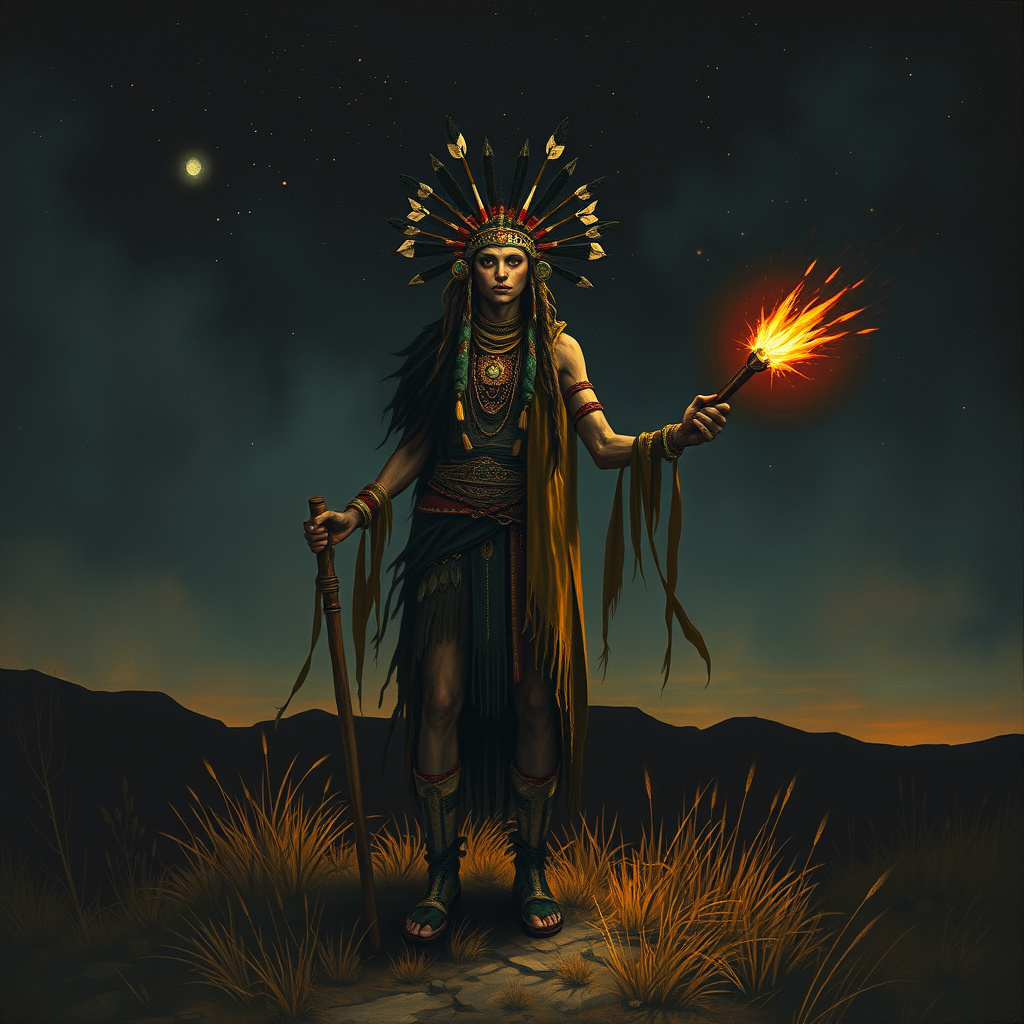Skinwalker
Overview

Description
The Legend of the Skinwalker: A Journey Into Navajo Myth and Mystery
The American Southwest has long been a land of wide deserts, jagged canyons, and ancient secrets. Among the many legends passed down through generations, one stands out for its chilling and unsettling nature: the legend of the Skinwalker. Rooted deeply in Navajo culture, this myth blends elements of shapeshifting, dark magic, and cautionary tales—a story that continues to captivate and terrify even today.
What Is a Skinwalker?
In Navajo tradition, a Skinwalker, or yee naaldlooshii, is a witch with the supernatural ability to transform into, possess, or disguise themselves as an animal. Unlike other shapeshifters in global folklore, Skinwalkers are considered inherently malevolent. They often use their powers for personal gain, revenge, or to cause harm, and are known for their cunning and deceptive nature.
Common animals associated with Skinwalkers include wolves, coyotes, foxes, owls, and even humans. The ability to take on these forms makes them elusive and dangerous, and sightings are often accompanied by an overwhelming sense of dread.
Origins and Cultural Significance
The Skinwalker legend is deeply intertwined with Navajo beliefs about witchcraft and spiritual balance. In traditional Navajo culture, witches who become Skinwalkers have broken a sacred code, using their knowledge of magic to harm others rather than maintain harmony. This makes Skinwalkers not just figures of fear but cautionary symbols: a warning against using knowledge for evil purposes.
It’s important to approach this topic with respect. The Skinwalker story is sacred to the Navajo people, and many elders are reluctant to share detailed accounts with outsiders. As a result, much of what circulates in popular media or online is speculative or sensationalized.
Modern Encounters and Pop Culture
Stories of Skinwalkers are not just relics of the past. Some people claim to have encountered these shapeshifters in the deserts and forests of the American Southwest. Accounts range from fleeting glimpses of strange, glowing-eyed animals to horrifying attacks that leave the witnesses deeply shaken. While skeptics attribute these reports to wildlife, misperceptions, or urban legend, the tales persist, growing more elaborate with each telling.
Hollywood and literature have also seized upon the legend. Movies, TV shows, and novels often portray Skinwalkers as monstrous villains, but these adaptations rarely capture the nuance of the original Navajo myth, reducing it to simple horror tropes. Despite this, the legend has fueled fascination, inspiring a new generation of paranormal enthusiasts and cryptid hunters.
Why the Legend Endures
The Skinwalker endures not just because it is terrifying, but because it represents the collision of the seen and unseen worlds. It challenges our understanding of reality, urging respect for the forces beyond human control. In a landscape as stark and mysterious as the American Southwest, stories of Skinwalkers serve as a reminder that the world is larger, stranger, and more dangerous than we might imagine.
Whether viewed as folklore, cultural warning, or a paranormal phenomenon, the Skinwalker continues to haunt our imagination. In every shadow, howl, or fleeting silhouette, the legend lives on—eternally shapeshifting, eternally enigmatic.
Behavior
Malevolent and harmful, practicing dark magic and harming others through supernatural means. Can run at superhuman speeds, even when in animal form. Known to mimic human voices and animal sounds. Often appears near homes at night, tapping on windows or leaving symbols. Associated with curses, illness, and death.
Reported Sightings (0)
No reported sightings yet.
Geographic Distribution
Southwestern United States (Navajo Nation)
United States
Desert regions, mesas, canyons, particularly in Arizona, New Mexico, Utah
Characteristics
Variable - human-sized in humanoid form, larger than normal when in animal form
Varies based on form
Historical Context
Ancient Navajo tradition, documented encounters since 1800s
In Navajo culture, Skinwalkers are witches who have gained supernatural power by violating a cultural taboo (often murder of a close relative). The topic is considered taboo to discuss and brings bad luck. They wear the skins of animals to shapeshift.
Skinwalker Ranch in Utah has been a hotspot for paranormal activity since the 1990s. Multiple reports from Navajo residents who refuse to speak publicly about their experiences. Reports from Highway 666 (now renumbered) in the Four Corners region.